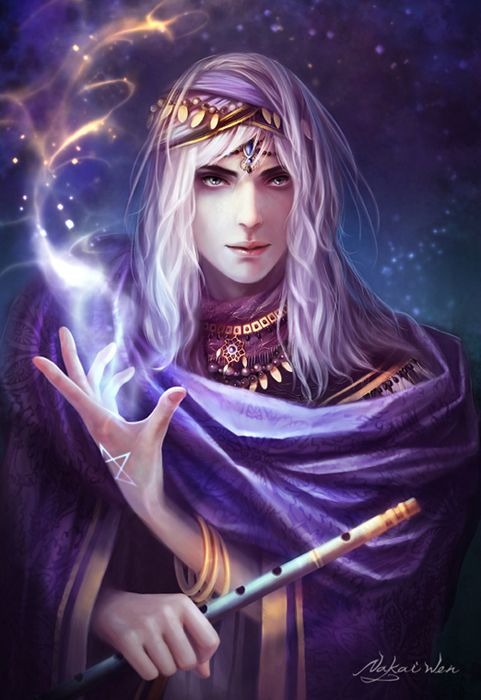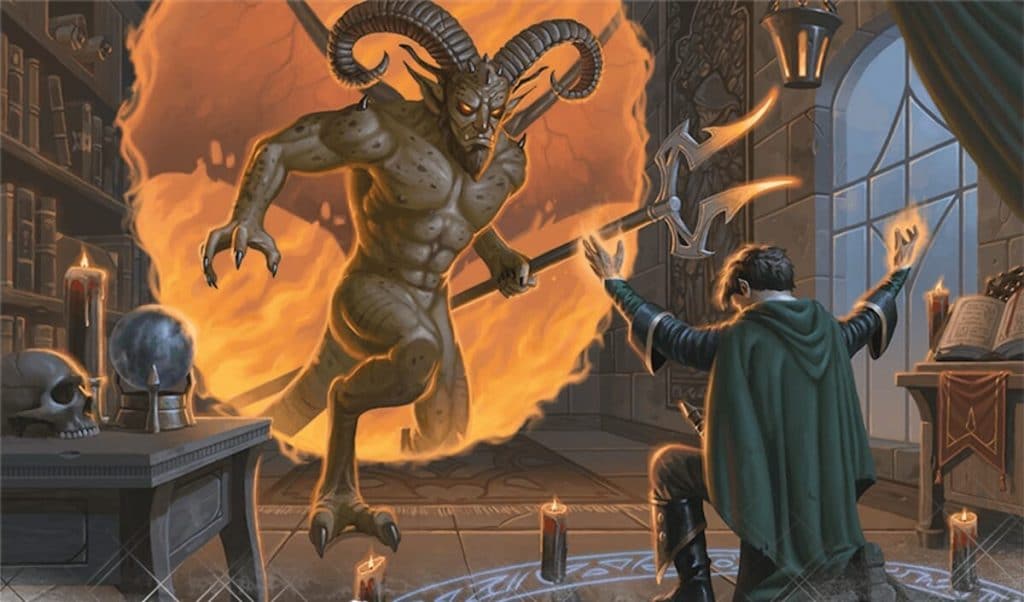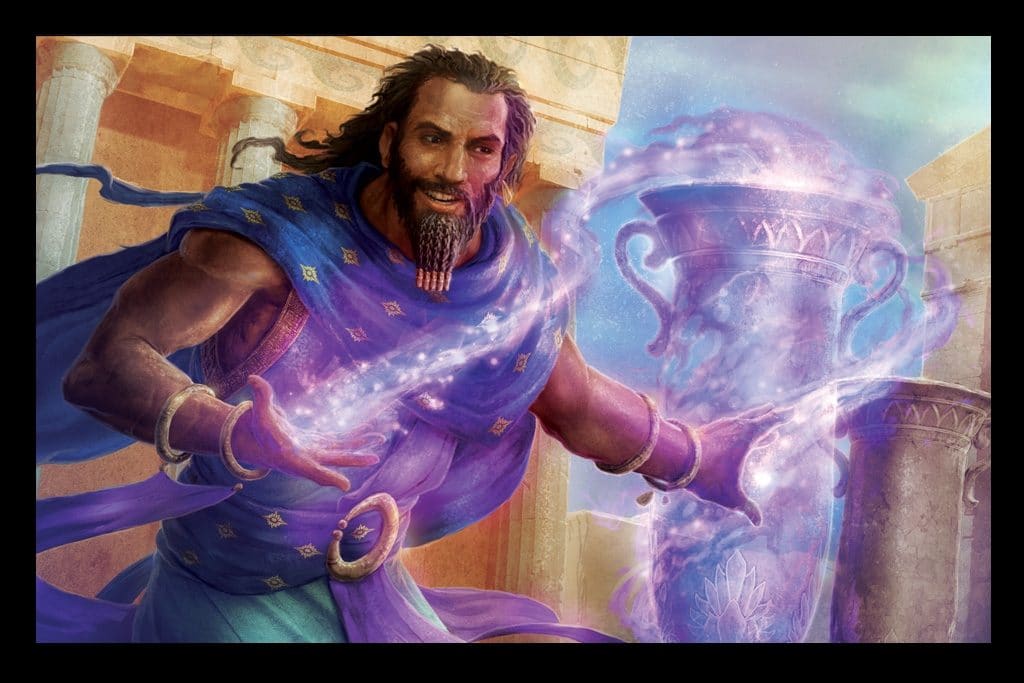The Conjuration Wizard for 5e is one of the stronger utility wizards. Both summoning allies to fight for them and conjuring materials needed for casting. The combined utility makes their powers limited by how creative you can be with an object. As a result, conjuration wizards in 5e are great for players who have a creative streak or using allies like one uses chess pieces.
How I Am Evaluating Them
For those who have read my previous reviews, feel free to skip this. If you haven’t, welcome! This is going over how I evaluate how strong a class is. There are three things that I am reviewing in the in-depth guide. I look over how strong the subclass is in combat, how much utility it has, and, if applicable, its’ roleplay ability. The reason, everyone’s playstyle is shown to fit their needs.
Now, when deciding if something is good for a guide, I look at what the subclass is trying to accomplish. Then look at how successful it succeeds in that task. For instance, in a previous article on the Divination Wizard I concluded, attempts to make you the ultimate save or suck spell caster. I then figure out how well that ability succeeds in letting you front line, as well as how soon it comes online.
If it is accomplished at level 2, then it is early game. Level 6 it is Early-Mid, Level 10 Late-Mid, and Level 14 is late game. I rate earlier tiers better as most Dungeon and Dragons Campaigns do not go beyond level 8. Without further a due, let start this review on the 5e Conjuration Wizard.
Color Meaning
GOLD- “That’s gold Jerry! Gold!” If an ability is highlighted gold, then this means that this ability not only is what defines your subclasses but accomplishes it better than almost any other subclass. I rarely do Gold ratings, so definitely pay attention to them if you see me do it.
Sky Blue –If the ability is sky blue, it means that this ability is a defining trait in your subclass but for one reason or another is not game-breaking like gold.
Blue– If it is just blue, then it’s a good ability but there are plenty of other abilities that perform better.Still better to have in a subclass than other colors.
Black. Black is ok. These are your more niche abilities that have bonuses in some situations but not useful in others.
Purple – Purple is for very niche abilities. They have times when they are good, but these are rare and almost never come up. Not the best color to see for an ability.
Red– Red is dead. It is the worse color to see on an ability. That said, no matter the color, an ability can work so don’t ignore a subclass if they have a red. Enough imagination and can-do attitude will make it okay but not optimal.
Conjuration Wizard 5e(Mid-Late Game)
While Conjurations gain some useful utility at level 2, their strongest ability doesn’t come online till level 10.
Moreover, while everything can be useful, there are many other skills, spells, or improvements that can match them in function. Making them one of the more lack-luster classes whose function is mainly for conjuring up creatures to fight for them.
In fact, their level 14th ability why might be useful in some moments on average will change almost nothing for your conjured beings’ survivability. Altering greatly how useful the ability seems to be at first glance. All in all, it is an okay class with nothing of game-breaking notice. That said, you can still make them powerful and fun so be sure to read the rest to see why I gave what for each ability.
Conjuration Savant
At 2nd level, it takes you half the gold and time to copy Conjuration spells into your spellbook.
A useful feature to save you some time and money, these can be found in every player’s handbook wizard so nothing special. However, unlike some of the other schools, 40 of the 199 wizard spells are conjuration. Some notable spells from that list include find familiar, misty step, and wish. So to say conjuration can be often overlooked is an understatement.

Minor Conjuration
Now we start getting into the meat of the topic, the unique abilities. Minor Conjuration can be found on page 116 of the player’s handbook and basically states:
At 2nd level, you can use an action to conjure up an inanimate object in your hand or on an unoccupied space within 10 feet of you. The object is visibly magical, radiating dim light out to 5 feet, and can be no larger than 3 feet on a side and weigh 10 pounds or less. Moreover, the objects form must be that of a nonmagical object you have seen. After 1 hour, you use this feature again, or if it takes any damage, the object disappears.
This is the bread and butter for a conjuration wizard utility.
With this, any object you are missing out will now magically appear for you. That said, while dungeons and dragons are all about fun, the system is half math and half rules. As such I am going to help both players and DMs like by clarifying some of the important parts to the wording.
Minor Conjuration: Defined
There are four points that must be met to use minor conjuration.
- It must be a nonmagical object.
- The object must weigh less than 10 pounds.
- It must be smaller than 3 feet wide.
- And most importantly, it must be something you have seen.
As long as these 4 points are satisfied, you have a case to justify anything to your DM. And vice versa, your DM can argue anything else and dismiss it. So, with that said, let’s take a look.
The first restriction on the ability is it must be a nonmagical object. Therefore, you can’t conjure anything such as healing potions, or +1 magical weapons. As such, your list is limited to regular swords and vials of acid instead.
It also states that it must be an object. Sorry to all the people who wish to make a black hole, but a black hole is not considered an object. The definition of an object is, “a discrete, inanimate item like a window or a sword, but is not composed of many objects like a vehicle.”
Taking this wording into account. The object must be a simple build such as a torch. However, something composed of a lot of objects and complex, like a flashlight, does not work
But they not only need to be nonmagical but also weigh 10 pounds or less. Weight is rarely considered in Dungeons & Dragons. I mean, gold coins have weight, but my rogue with 3000 gold pieces definitely doesn’t feel the weight. And many other games I have played never take it into account.
This usually means weight isn’t a big consideration, but do your best to make sure it stays under ten pounds. To help you, here is a list of equipment on D&D Beyond that states weights of common items.
The next point is a side can be no larger than 3 feet. This reduces how big an item can be to effectively feet. A shield can work, but a greatsword (average 5ft) would not.
Finally comes the most difficult one to establish. Something you have seen. What defines seen? Does something I saw for one second 300 feet away work? If not, then what? The guidelines most people use to justify seen is the same as Druid’s wild shape which states, A druid can transform into another beast they have seen. Under this guideline what you allow a druid to wild shape into is the same limitations on minor conjuration.
Another way to look at this is familiar objects. Is your player familiar with a magnifying glass? If so, he can conjure one up, is he familiar with an orange? If no, he cannot conjure one. It is personally how I run the see limitation and has worked in every situation it has come up. If you want to read more about this, you can click on a Reddit link that has a list of stuff to answer some more specific questions about the ability.
Conjuration Wizard 5e: Benign Transportation
This is your get out of jail free card. Functioning very similar to misty step, Benign Transportation basically states:
As an action, teleport up to 30 feet to an unoccupied spot you can see. Or, you can choose a space that is occupied by a Small or Medium creature up to 30 feet. If said creature is willing, you swap places. You can’t use it again until you finish a long rest or you cast a conjuration spell of 1st level or higher.
This is basically used when the wizard gets in trouble. So a solid panic button for any wizard, as the least popular spot for the average wizard is surrounded by enemies. Not a ton to say on this one but a few great uses for this one is if you are in a jail cell or in a force cage. Each of these can be troublesome for any player and being able to get out easily is a great option.
That said, it is not every battle or scenario where this will come in handy, plus the fact that you will have to use your action to do this instead of a bonus action like misty step makes this a little weaker in my eyes. All in all a decent ability but nothing to automatically choose.

Focused Conjuration
Your best ability for combat and even roleplay. Focused Conjuration is about:
Once you are 10th level, concentration on conjuration spells, can’t be broken as a result of damage.
A great ability for anyone who knows how important concentration saves are to those holding spells. A good example of this is through the 5th level spell conjure elemental. Basically you can summon an elemental CR rating 5 or lower to aid your allies in whatever way you see fit. Incredibly useful since after summoning them, requires no more actions on your part. Meaning you can still attack or do whatever you want.
That said, the downside is if your concentration is broken, your elemental becomes hostile to you and can attack you. Which makes this great spell potentially awful since you have now aided the enemy with a new ally. However, now you do not need to worry about that nearly as much since your concentration can’t be broken from taking damage. Meaning Sleet Storm and Dispel Magic are the only things to really worry about.
But how useful is that really? Well breaking down a monsters DPR down by average multi-attack, I was able to calculate a monsters average damage per hit at each level. From there I calculated DC and ran off the assumption of a +2 CON. A simple enough ability in a point-buy system. For fun, I also calculated if you have proficiency and if you have war caster. The results were definitely rewarding.
Focused Conjuration: How Useful?
How useful is this ability? Incredibly useful. In fact from level 12 and onward it becomes almost necessarily. The results showed that with only a +2 to CON saves, a wizard will have on average a 10% chance to pass their saves. Meaning this ability will come in handy 94% of the time from levels 1-20. Meanwhile, proficiency means this ability is only useful 74% of the time and 84% of the time for war caster.
The fact that 74% is the lowest this ability will be useful makes this phenomenal. Changing impending doom to certain success. Now the one thing that should be noted that this isn’t broken if it’s from damage. This does not mean environmental saves and unconscious effect it. In fact, falling unconscious immediately ends the concentration meaning it can still be broken. So still be careful when charging into battle.
Conjuration Wizard 5e: Durable Summons
If you really want to boost your summoned creatures’ survivability, this is the best option. At least, that is what I thought. Truth is far from it. After calculation the Damage per hit, and the average elemental hit points. A monster will kill an elemental in 3 attacks or less. After adding another 30 hitpoints to the summoned creature, they will on average, survive the exact same amount of attacks. Except at level 17 and 18, where the average time increases roughly enough to have them survive one more attack.
I also switched it to DPR and the summoned monster will only survive one full round at levels 14-16 with a 14% chance to survive one full round. Meaning, while it might beef up your elementals, you summoned creatures do not have a high chance of surviving full-wave attacks if a monster you are fighting gets serious.
However, if you are a familiar lover like me, you should note that this ability also affects you familiar meaning your familiar now has 31hitpoints instead of 1 hitpoint. Making him able to survive small damaging effects and not destroyed upon being breathed on. So have some fun with that knowledge.
Playing Recommendations
Now comes the part where I suggest some recommended builds and personality for your 5e conjuration wizard. For a race, I would recommend either, Yuant-Ti, Tiefling, or Genasi. They each have a connection to the conjured beings you would be using for flavor and have a bonus to intelligence making them useful for ability scores.
As for three recommended spells, Find Familiar is a must in my opinion. If you need to see why, then I suggest reading my review on the wide array of familiars you can have and how strong each of them are. I would also recommend Sleet Storm as it is great for dealing with spellcasters concentrating on something, and wish if you ever get to the ability to cast 9th level spells.
As for a quirk among your character, I know cliche but it hits just the right of childhood to make it fun. Basically be like a Pokemon master and try to “be the very best”. Catching all the different elementals and creatures to summon and use for you in a fight. It’s relatable enough to be appealing to most but also fits thematically. Plus if you have a homebrew campaign you might be able to gain some extra creatures to use outside of what spells specify. Making this quirk even better.
Conjuration Wizard 5e Conclusion
While receiving a relatively low rating in comparison to some of my other reviews, the 5e conjuration wizard still upholds a decent utility for its level 2 ability. But also gains a noteworthy concentration buff at level 10. Stronger than any other ability for concentration saving throws… For certain situations.
If you are looking for another wizard who can be pretty good for conjuration. Check out the war wizard. Their arcane deflection is great for making those saving throws from level 2 and up, plus their 10th level ability is also great for protecting oneself and maintaining conjuration spells. But their abilities are not limited to conjuration spells only. Be sure to check them out they are a pretty popular choice for the wizard subclasses. Hope this article has conjured up some good feelings for you and have a wonderful day!
P.S. Now that you know the general information for the conjuration wizard. Why not kick it up a notch with Wizard’s Mastery: A Complete Wizard’s Guide! Giving you even more information then than this for all ten wizard subclasses with ways to make your gameplay more memorable and more unique. Check it out today!


Pingback: Complete Build Guide To 5e Illusion Wizards - Wizard Of The Tavern